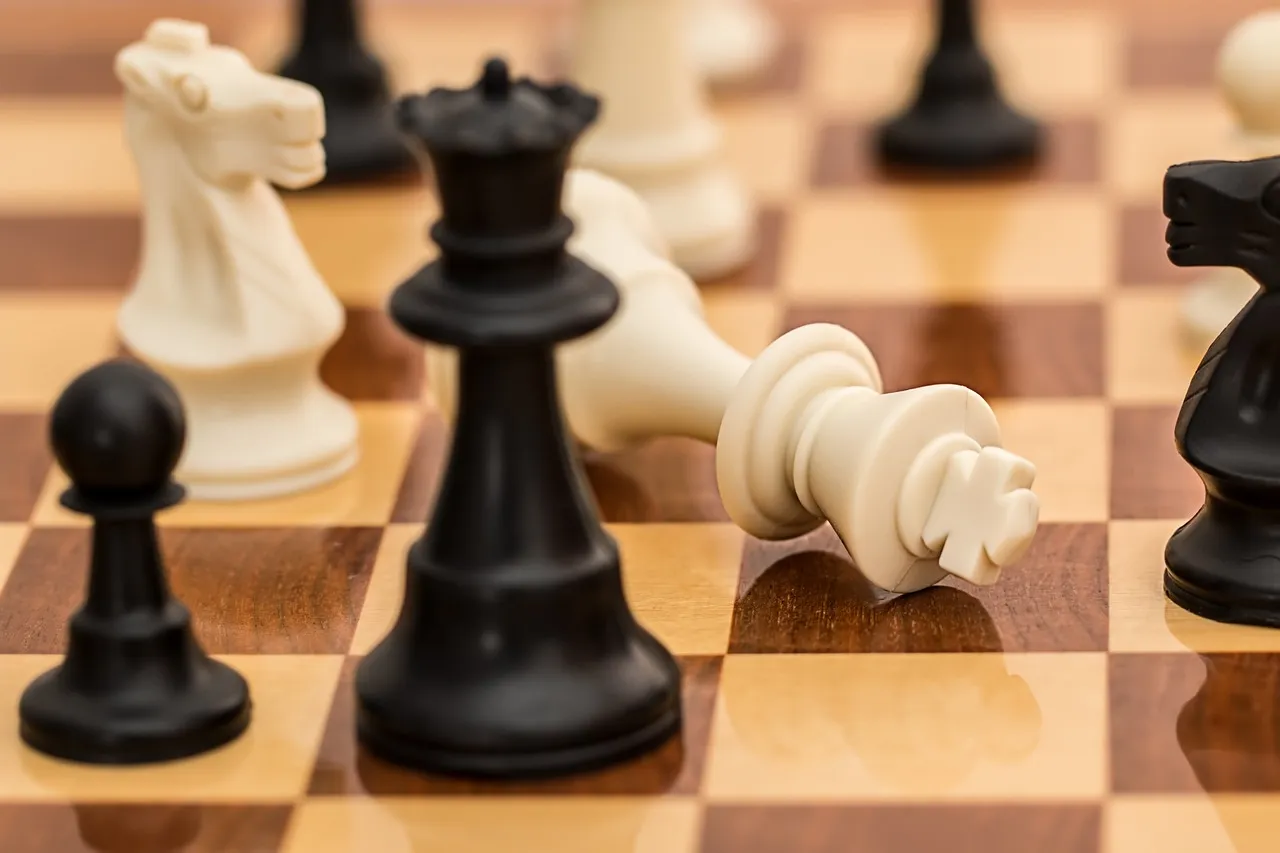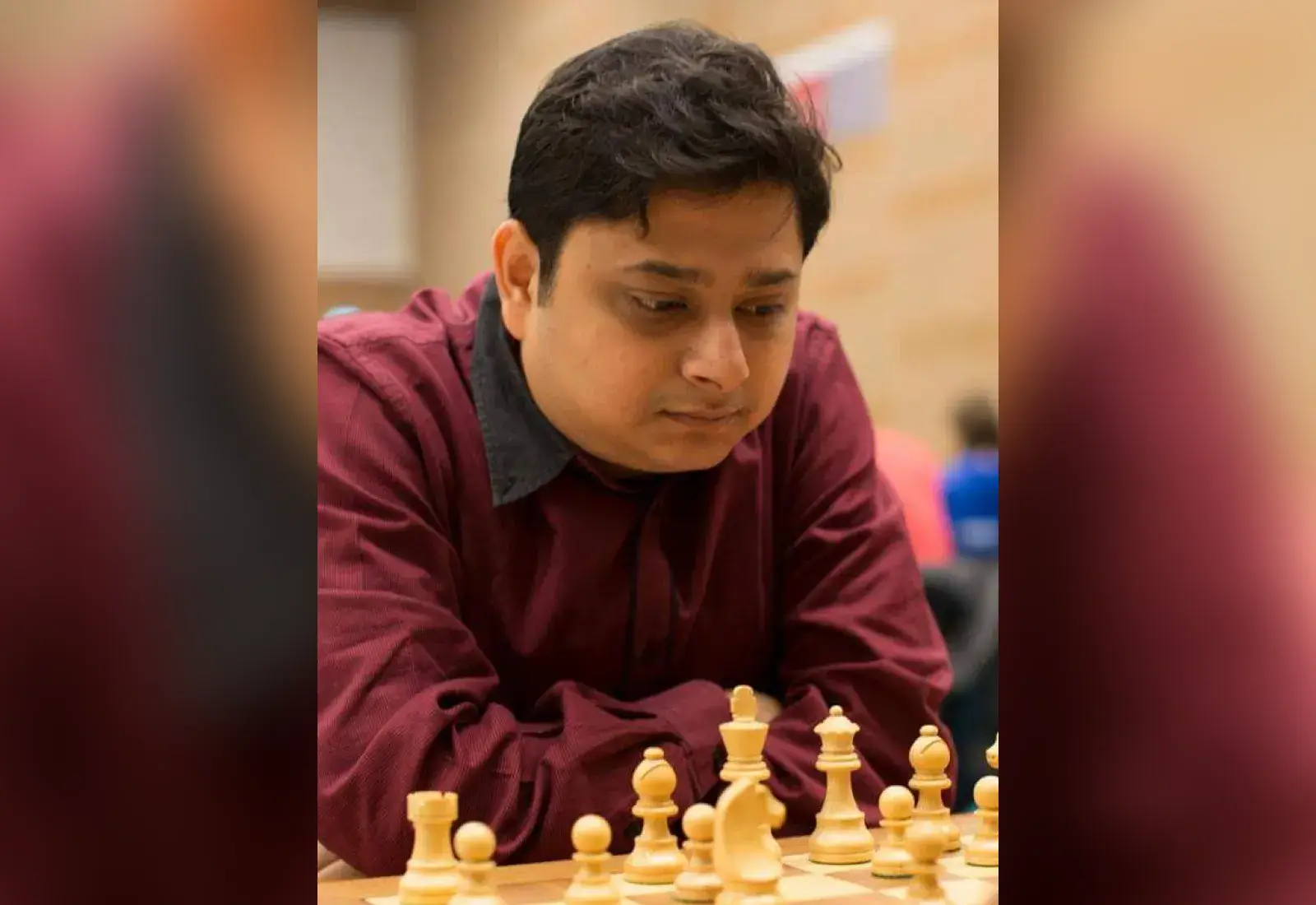Chess Board Setup: How to Set Up a Chess Board
Knowing how to set up a chessboard is the first step for any player who wants to enjoy the game. Chess is a game of strategy, and even small mistakes can change the outcome. Setting up the chess board correctly helps both players start with equal chances. This makes the game fair and helps you think ahead.
In this blog, we will learn the correct way to set up a chessboard. We will also learn how to avoid common mistakes, so your game starts smoothly every time.
8 Easy Steps to Set Up a Chess Board
Step 1: Lay out the light square in the bottom-right corner
Step 2: Place all the pawns on the second rows
Step 3: Position the rooks in both the corners of the first row
Step 4: Set the knights next to the rooks on both sides
Step 5: Place the bishops beside the knights
Step 6: Place the queen on the square that matches her color
Step 7: Put the king in the last remaining square in the first row
Step 8: Don’t forget, White always moves first
Step 1: Lay out the light square in the bottom-right corner
The first step in how to set up a chessboard is to place the board the right way. This means the bottom-right corner should be a light-colored square for both players. It’s a small step but very important.
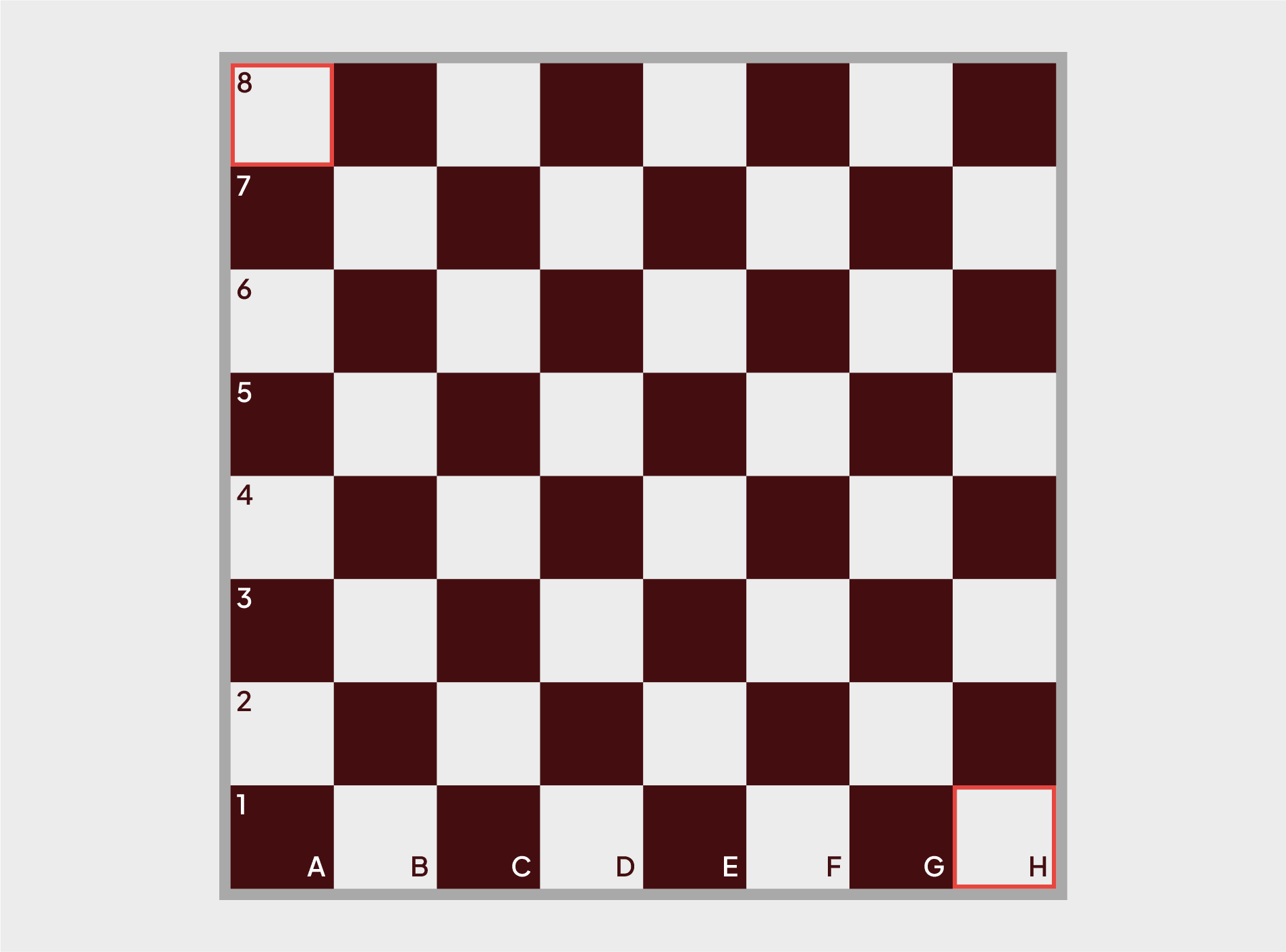 Chess is played on a grid with rows and columns, and the board must be placed correctly so that the pieces move the right way. When the board is set up like this, everything else fits into place. It also makes the game fair and helps you follow the right strategies.
Chess is played on a grid with rows and columns, and the board must be placed correctly so that the pieces move the right way. When the board is set up like this, everything else fits into place. It also makes the game fair and helps you follow the right strategies.
Step 2: Place all the pawns on the second rows
Pawns are the front line and help protect the stronger pieces. Each player has eight pawns, and they go on the second row from their side.
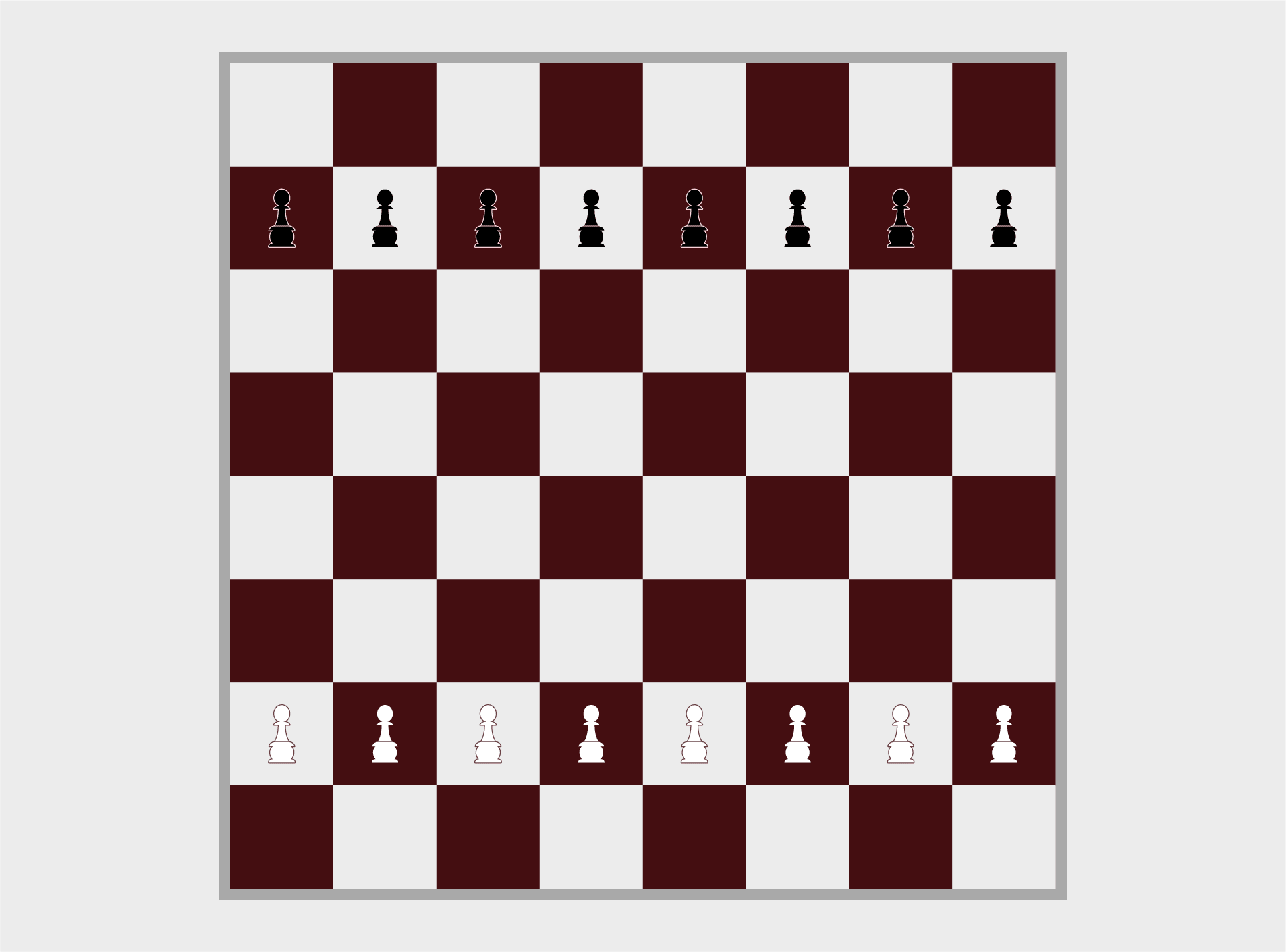 For white, place the pawns on row 2. For black, place them on row 7. Each pawn should be right in front of a bigger piece. This keeps the setup neat and helps both players play fairly. A straight row of pawns also gives you a strong start for your game.
For white, place the pawns on row 2. For black, place them on row 7. Each pawn should be right in front of a bigger piece. This keeps the setup neat and helps both players play fairly. A straight row of pawns also gives you a strong start for your game.
Step 3: Position the rooks in both the corners of the first row
Rooks are the pieces that look like small castles or towers. Each player has two rooks. Place one rook in each corner of the first row (also called the back rank). For white, this means putting rooks on squares a1 and h1, and for black, on a8 and h8. Starting with the rooks helps create the correct order for placing the rest of the pieces in the first row.
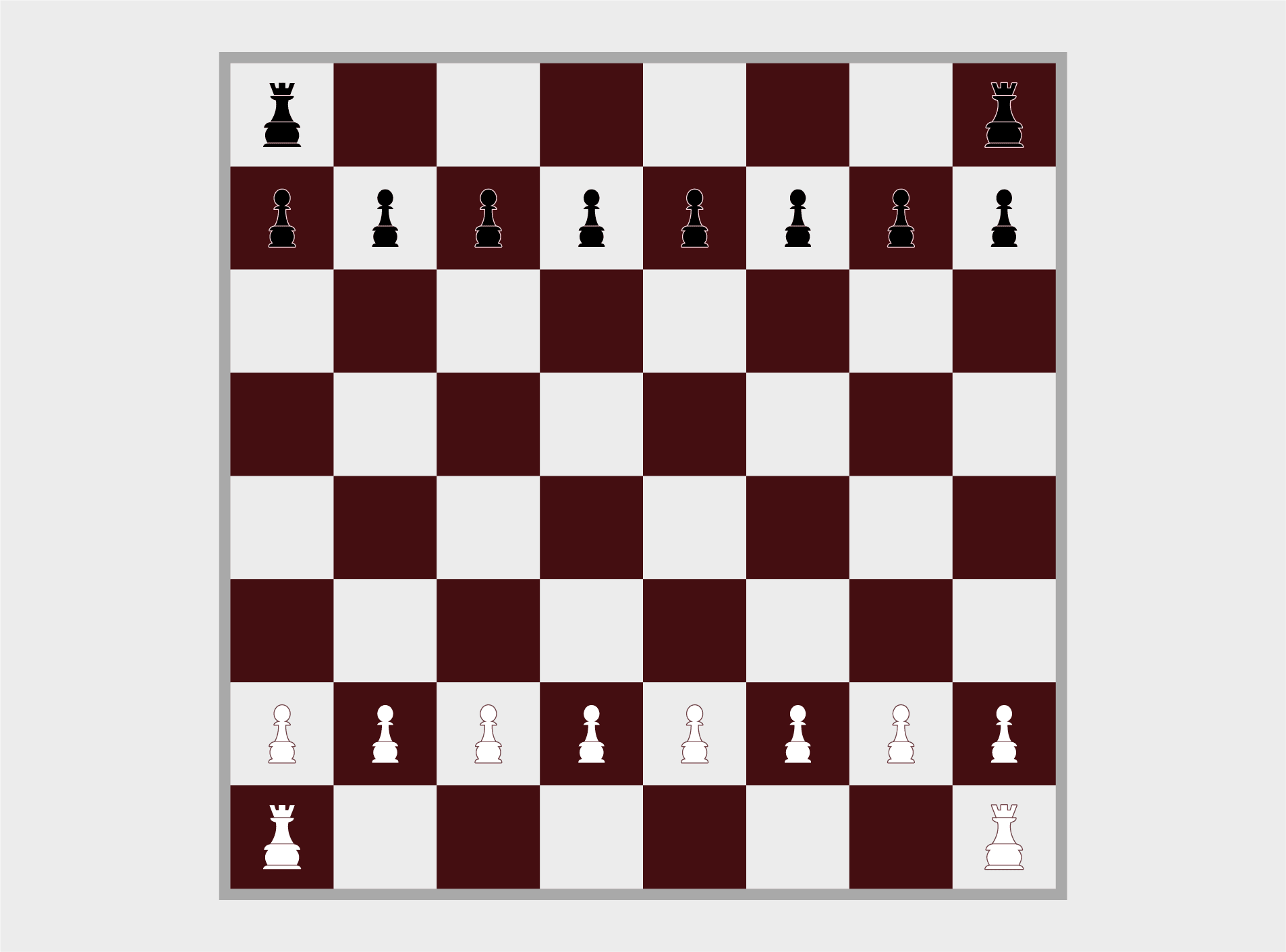
Step 4: Set the knights next to the rooks on both sides
Knights are pieces shaped like horses. Each player has two knights. Place one knight next to each rook, moving inward from the corner. So from left to right, it should be rook, then knight. For white, the knights go on b1 and g1 and for black, they go on b8 and g8.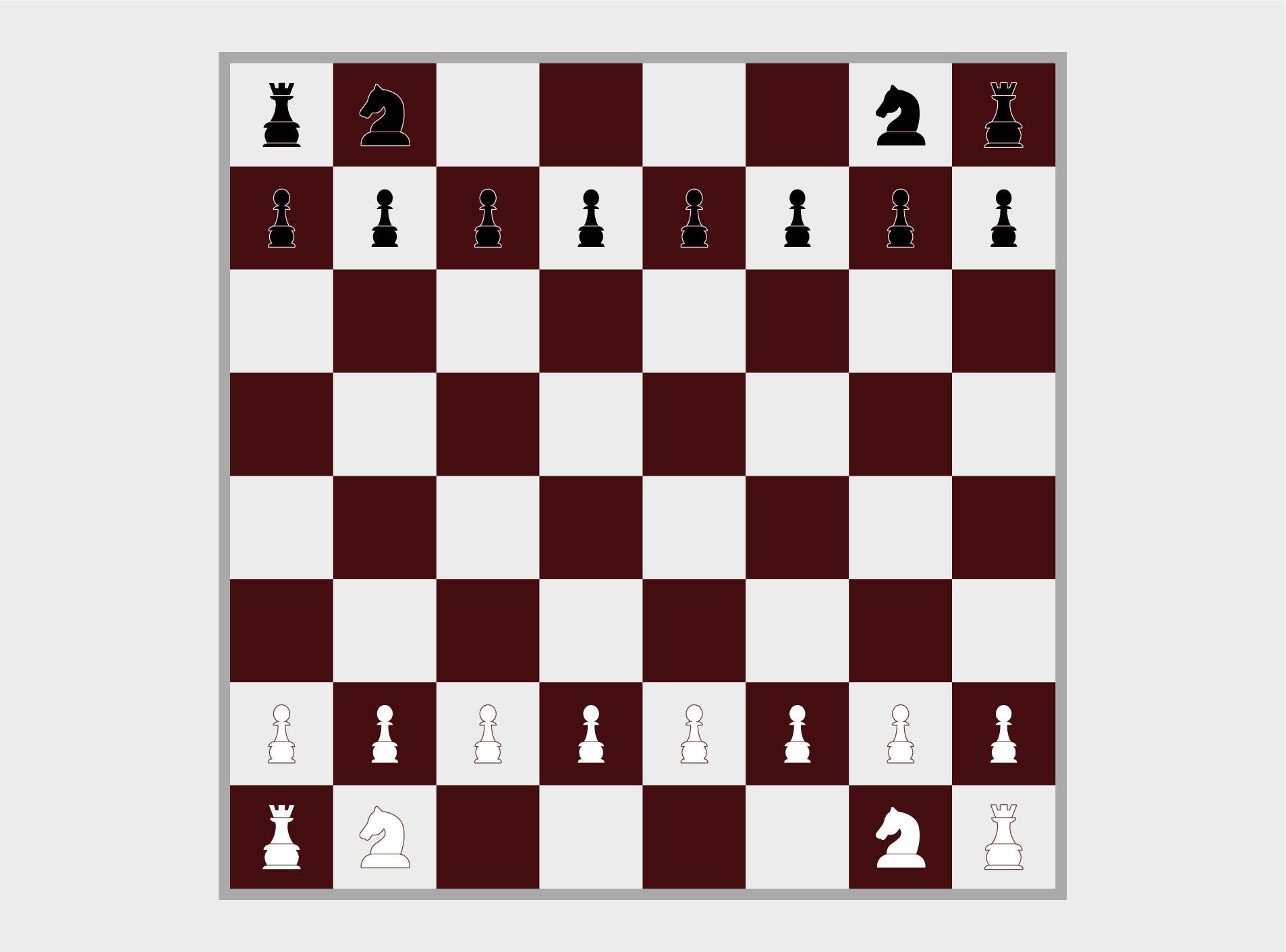
Step 5: Place the bishops beside the knights
Next to each knight, place a bishop. Bishops are tall pieces with a cut or slit at the top. They go right beside the knights, one on each side of the board.
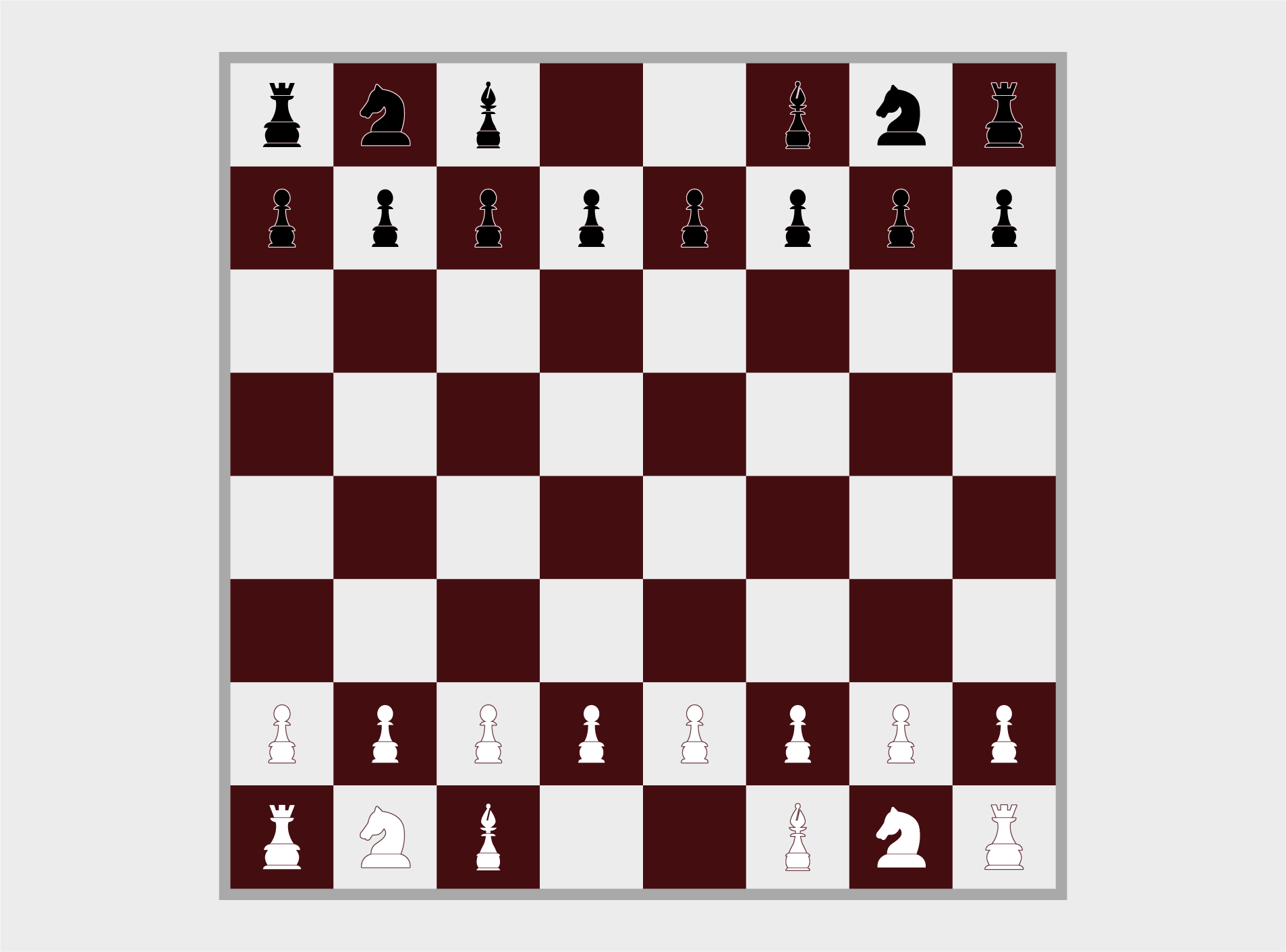
Step 6: Place the queen on the square that matches her color
The queen is placed on the square that matches her color. The white queen goes on the white square, and the black queen goes on the black square. She should be placed in the middle two squares, right next to a bishop.
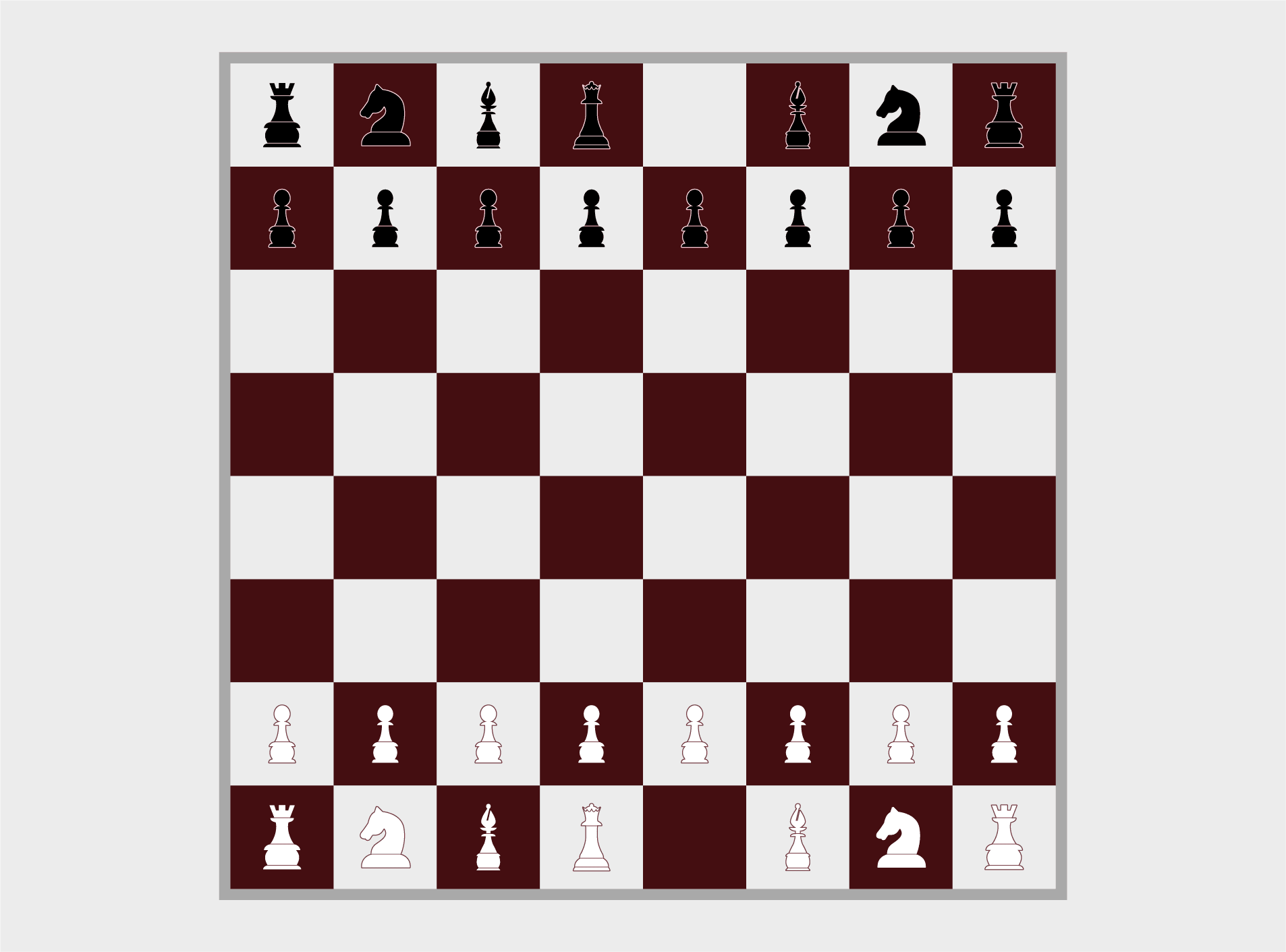
Step 7: Put the king in the last remaining square in the first row
The king goes in the one empty square next to the queen. After this step, your entire back row (first row) will be full—rook, knight, bishop, queen, king, bishop, knight, and rook.
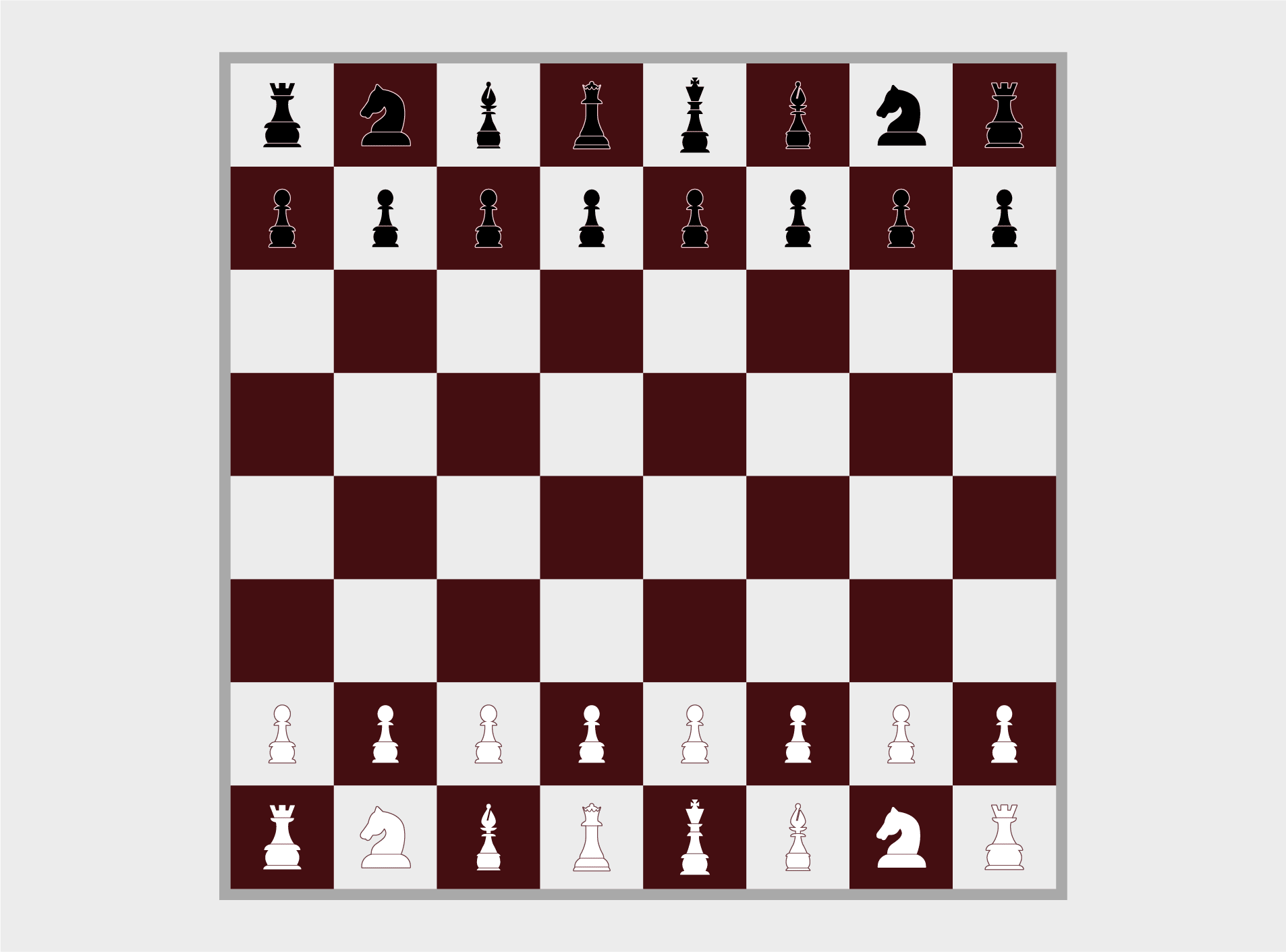
Step 8: Don’t forget, White always moves first
Once everything is set, remember that the player with the white pieces always makes the first move. This is a standard rule in every game of chess.
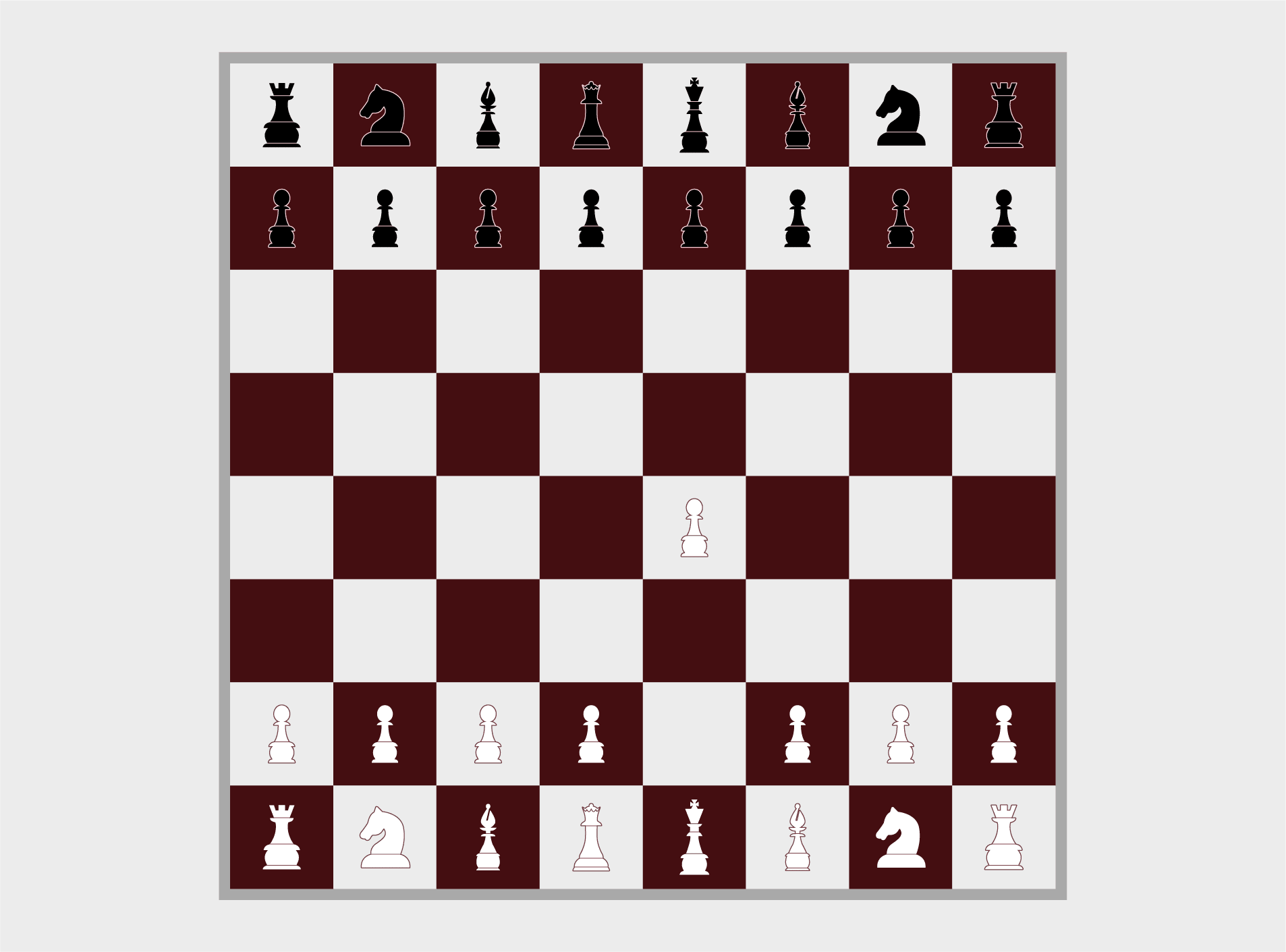
Common Mistakes to Avoid in Chessboard Setup
Misplacing the Queen and King:
One of the most common mistakes beginners make is placing the queen and king on the wrong squares. Many players confuse the positioning, often placing the queen and king incorrectly because they look similar or due to inexperience. A simple rule to remember is that the queen always goes on her own color—meaning the white queen should be placed on the white square, and the black queen on the black square. Once the queen is in the correct position, the king should be placed on the remaining square next to the queen. Misplacing these two powerful pieces can lead to confusion and disrupt your strategic plans.
Incorrect Board Orientation:
Another frequent error is setting the board up with the wrong orientation. If the light-colored square is not in the bottom-right corner for both players, the entire game setup will be incorrect. This misalignment can confuse the players and make following strategies and standard notations difficult. Proper orientation ensures that both players are using the board in a way that aligns with chess conventions. It’s a simple mistake to fix but can have a big impact on the game.
Overlapping or Misaligning Pieces:
Sometimes players don't position their pieces properly within their squares, causing pieces to overlap or misalign. This might seem like a minor issue, but it can make the board look cluttered and disorganized. It's important to place each piece neatly in the center of its square to ensure the board remains tidy and easy to read. A well-organized board helps both players focus on strategy rather than being distracted by misplaced pieces.
Additional Tips for Chess Setup
Double-check Before Starting:
Before you begin playing, it's a good idea to double-check the board to ensure that both sides mirror each other correctly. Each piece on the white side should have its counterpart in the exact same position on the black side. This prevents confusion and ensures a fair and balanced game from the start. Taking a few moments to verify the setup can save you from mistakes later on, especially in competitive or tournament settings where precision is crucial.
Why Precision is Crucial:
Accuracy in setting up the chessboard is important not only for casual games but also in official tournaments. Incorrect setups or misaligned pieces can result in penalties or disqualification in competitive chess. Even in casual play, precision in the setup contributes to a more enjoyable and fair game, ensuring both players are working from the same starting conditions.
Set Up Quickly for Blitz or Rapid Games:
In fast-paced formats like blitz or rapid chess, where time is limited, learning to set up the board quickly is key. In these types of games, every second counts, so players often need to master rapid setup techniques. A good tip is to organize the pieces off the board in advance, then place them swiftly in the correct positions when it's time to play. Efficient setup helps ensure you have more time to focus on your game and less time worrying about getting the pieces in place.
In Essence: Chess board Setup
Setting up the chessboard correctly is the first step toward a fair and exciting game. Whether you’re playing casually with friends or gearing up for a tournament, knowing how to set up a chess board is crucial. By placing each piece in its proper position, you not only ensure the game starts off on the right foot but also set the stage for smooth, strategic gameplay.
Practice makes perfect, so don’t be afraid to take the time to practice setting up the board until it becomes second nature. Over time, you’ll notice how a well-organized board contributes to the flow of the game, making every move more enjoyable and focused. With the right setup, you’ll be ready to take on any opponent, whether it's a casual weekend match or a fast-paced blitz game.
So, the next time you play, double-check your setup, stay focused, and enjoy the beauty of a well-played game!
If you want to get these basic tactics clear, first you have to learn from an expert chess player and teacher. You can also explore online chess classes to get connected with the best teachers from anywhere in the world.
The bottom-right square on a chess board should always be a light-colored square. When setting up the board, make sure the light square is in the bottom-right corner of each player’s side. This ensures the board is oriented correctly before placing any pieces.
The queen is the most powerful chess piece. She can move any number of squares vertically, horizontally, or diagonally, combining the abilities of both the rook and the bishop, making her extremely versatile and influential in the game.
The queen is placed on her color (white queen on white, black queen on black), and the king goes on the opposite color square next to her.
The light square should always be at the bottom-right corner for both players.
Use the mnemonic: “Rook, Knight, Bishop, Queen, King, Bishop, Knight, Rook” from the corners inward.


